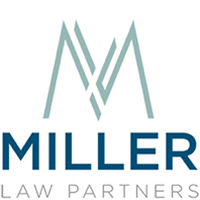Following yesterday’s approval of Cal/OSHA’s Emergency Temporary Standards (“ETS”) that requires employers to protect workers from hazards related to COVID-19, employers are now required to immediately take steps in compliance with the ETS to implement a written COVID-19 Prevention Plan and to follow specific protocols to protect the workplace.
As expected, Cal/OSHA has released additional guidance for employers to help them quickly and swiftly come into compliance with the new law.
The following resources are now available to employers:
Employers are encouraged to review each of Cal/OSHA’s resources in full and to seek the advice of experienced employment counsel in implementing the required protocols.
Our prior posts about Cal/OSHA’s ETS can be found here and here.
FAQ Highlights:
Some of the questions answered by Cal/OSHA in its FAQs include:
Q: What if an employer is unable to comply with the ETS by its effective date?
A: Many of the provisions of these regulations have already been required under employers’ Injury and Illness Prevention Programs (IIPP), including the requirement to identify and address hazards, use of face coverings, and physical distancing. As employers implement the new regulations, Cal/OSHA enforcement personnel will consider an employer’s good faith efforts in working towards compliance, but some aspects, such as eliminating hazards and implementing testing requirements during an outbreak, are essential.
Q: What training must an employer provide employees under the ETS?
A: Employee training must cover:
- Employer policies and procedures to protect employees from COVID-19 hazards
- COVID-19 related benefit information, from either the employer or from federal, state or local government, that may be available to employees impacted by COVID-19. Information on COVID-19 benefits such as paid sick leave and workers’ compensation benefits is posted on the Department of Industrial Relations’ Coronavirus Resources webpage.
- The fact that COVID-19 is an infectious disease that can be spread through the air when an infectious person talks or vocalizes, sneezes, coughs, or exhales; that COVID-19 may be transmitted when a person touches a contaminated object and then touches their eyes, nose, or mouth, although that is less common; and that an infectious person may show no symptoms
- The importance of physical distancing and wearing face coverings
- The fact that particles containing the virus can travel more than six feet, especially indoors, so physical distancing must be combined with other controls, including face coverings and hand hygiene, to be effective
- The importance of frequent hand washing for at least 20 seconds and use of hand sanitizer when handwashing facilities are not available
- Proper use of face coverings, and the fact that they are not respiratory protection
- The symptoms of COVID-19 and the importance of not coming to work and getting tested if an employee has symptoms
Cal/OSHA will provide training resources on its website for employers to use to supplement site-specific training to comply with the ETS.
Q: What are the testing requirements in the ETS?
A: An employer’s testing obligations are the following:
- Inform all employees on how they can obtain testing. This could be through the employer, local health department, a health plan, or at a community testing center. The only obligation to all employees is to provide information.
- Offer testing to an employee at no cost and during working hours in the event of a potential COVID-19 work-related exposure.
- Provide periodic (at least weekly or twice per week depending on the magnitude of the outbreak) COVID-19 testing to all employees in an “exposed workplace” during an outbreak.
- Testing must be provided in a manner that ensures employee confidentiality.
Q: In a non-outbreak setting, what are employers required to do when they learn that one or more of their employees had a COVID-19 exposure at the workplace?
A: Employers must:
- Notify all employees and employees’ authorized representatives who may have had COVID-19 exposure within one business day in a manner that does not reveal the COVID-19 case’s personal identifying information
- Offer testing at no cost to any employee potentially exposed to COVID-19 in the workplace, and provide applicable benefit information. The time an employee spends being tested is considered compensable hours worked.
- Exclude from the workplace employees who test positive for COVID-19 and employees with COVID-19 exposure, and follow the requirements for preserving their pay and benefits
- Follow the return to work criteria for returning excluded employees to work
- Investigate the exposure and address hazards
- Follow all recordkeeping and reporting requirements for employee COVID-19 cases.
Q: In an outbreak (three or more COVID-19 cases in an “exposed workplace” within a 14-day period or identified as an outbreak by a local health department), what are an employer’s requirements?
A: In addition to the requirements for non-outbreak settings, an employer must:
- Immediately provide testing to all employees in the exposed workplace and exclude positive cases and exposures from work; repeat the testing one week later; and
- Continue testing employees at least weekly until the workplace no longer qualifies as an outbreak.
Q: What are an employer’s requirements in a major outbreak (20 or more COVID-19 cases in an “exposed workplace” within a 30-day period)?
A: In addition to the requirements for non-outbreak settings, an employer must:
- Provide testing to all employees in the exposed workplace at least twice weekly and exclude positive cases and exposures until there are no new cases detected for a 14-day period;
- Implement ventilation changes to mechanical ventilation systems including increasing filtration efficiency to at least MERV-13, or the highest efficiency compatible with the ventilation system.
- Evaluate whether HEPA air filtration units are needed in poorly ventilated areas;
- Determine the need for a respiratory protection program or changes to an existing respiratory protection program under section 5144 to address COVID-19 hazards; and
- Consider halting all or part of operations to control the virus.
Q: What is an “exposed workplace” and how should an employer determine which work areas are included?
A: An exposed workplace is a work location, working area, or common area used or accessed by a COVID-19 case during the high-risk period, including bathrooms, walkways, hallways, aisles, break or eating areas, and waiting areas. If, within 14 days, three COVID-19 cases share the same “exposed workplace,” then the Multiple COVID-19 Infections and COVID-19 Outbreaks standard (section 3205.1) applies and additional testing will be required. When determining which areas constitute a single “exposed workplace” for purposes of enforcing testing requirements, Cal/OSHA does not expect employers to treat areas where masked workers momentarily pass through the same space without interacting or congregating as an “exposed workplace,” so they may focus on locations where transmission is more likely.
Q: Does the “exposed workplace” mean the entire workplace? Does this change after January 1, 2021 when AB 685 goes into effect?
A: No, the “exposed workplace” includes only the areas of the building where the COVID-19 cases were present during the “high-risk exposure period.” This will not change after January 1, 2021.
Q: Is the testing requirement for outbreaks triggered by three or more cases in an entire building?
A: No, the testing requirement is triggered by three or more cases in a 14-day period present in the same “exposed workplace” during the “high-risk exposure period.” For other areas of the workplace, follow the requirements for employees who are exposed to COVID-19 cases.
Q: What are the criteria for a COVID-19 case to return to work?
A: A COVID-19 case may return to work when any of the following occur:
- For employees with symptoms all of these conditions must be met:
- At least 24 hours have passed since a fever of 100.4 or higher has resolved without the use of fever-reducing medications;
- COVID-19 symptoms have improved; and
- At least 10 days have passed since COVID-19 symptoms first appeared
- For employees without symptoms, at least 10 days have passed since the COVID-19 case’s first positive test
- If a licensed health care professional determines the person is not/is no longer a COVID-19 case, in accordance with California Department of Public Health (CDPH) or local health department recommendations
Q: What is the criteria for an employee exposed to a COVID-19 case in the workplace to return to work?
A: Employees with COVID-19 exposure may return to the workplace 14 days after the last known COVID-19 exposure.
Q: Must an employer pay an employee while the employee is excluded from work?
A: If the employee is able and available to work, the employer must continue to provide the employee’s pay and benefits. An employer may require the employee to exhaust paid sick leave benefits before providing exclusion pay, and may offset payments by the amount an employee receives in other benefit payments. (Please refer to the Labor Commissioner’s COVID-19 Guidance and Resources for information on paid sick leave requirements.). These obligations do not apply if an employer establishes the employee’s exposure was not work-related.
Employers are encouraged to contact experienced employment counsel with any questions regarding an employer’s obligations under these and other COVID-19 related workplace requirements.
Employers with questions or needing assistance with workplace health and safety programs can also call Cal/OSHA’s Consultation Services Branch at 800-963-9424.

